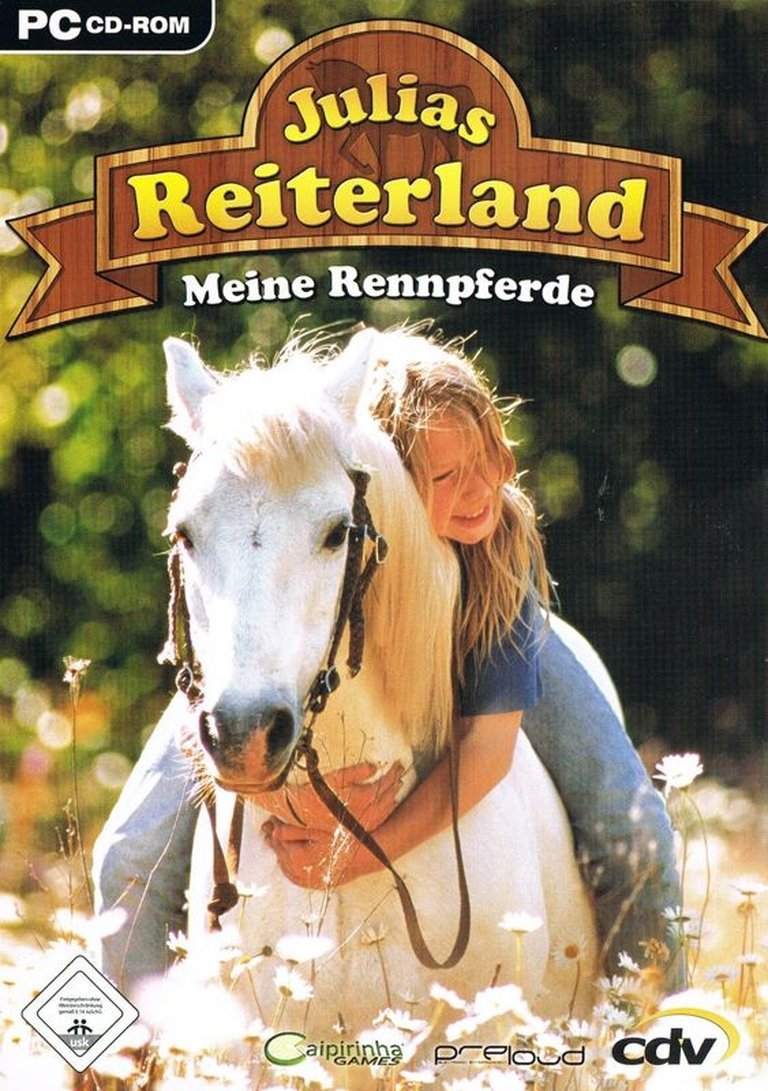- Release Year: 2006
- Platforms: Windows
- Publisher: CDV Software Entertainment AG
- Developer: Caipirinha Games GmbH, Preloud
- Genre: Action, Sports
- Perspective: Behind view
- Game Mode: Single-player
- Gameplay: Missions, Time trial mode
- Setting: Horse racing, Seasons

Description
Rider’s World: I Want to Race is a horse racing simulator where players can select their horse, choose equipment, compete against others, and experience the thrill of racing while controlling their mount in real time. The game offers various difficulty levels and features internet multiplayer for up to 7 players, all while enjoying different tracks and seasonal weather.
Gameplay Videos
Rider’s World: I Want to Race: Review
Rider’s World: I Want to Race, released in 2006, marks a unique entry in the challenging genre of horse racing video games. This title, developed by a lesser-known German studio named Caipirinha Games, premiered during a time when the horse racing simulation sub-genre was not as saturated as it is today. The game offers a blend of vibrant visuals, complex horse training simulations, and a social competitive edge through its online multiplayer modes.
Introduction
Before delving into the intricacies of Rider’s World, it’s crucial to acknowledge the legacy of horse racing games in the history of virtual sports. Games like Winning Post, Horizon: Forbidden West, and Red Dead Redemption have set high standards. Rider’s World stands out, not through technical prowess, but by adapting to the racing genre’s nuances with accessible depth and a robust multiplayer system.
Development History & Context
Born in the German game development scene, Rider’s World emerges at a pivotal moment in the evolution of the horse racing game genre. Developers faced significant technological constraints typical of the early 2000s, with pre-Integrated Development Environment technology (pre-iddleware) limiting the visual fidelity and gameplay depth they could achieve. However, the game offers a refreshing take on racing simulation by prioritizing accessibility. This approach was revolutionary, especially with the burgeoning online gaming scene primed for multiplayer races.
Caipirinha Games envisioned Rider’s World as a community-driven game, fostering a collaborative environment between players and their virtual horses. The developers’ studio, averaging a small team size and relying on community feedback, ensured a more personal approach to game design and development, making Rider’s World a unique experiment in the genre.
Narrative & Thematic Deep Dive
Rider’s World’s storytelling is the game’s weakest aspect, focusing not on a compelling narrative arc but on a series of missions and time trials that encourage progression through the game. The lack of a strong narrative is compensated by the game’s thematic emphasis on the cycle of horse training, racing, and post-race care—reflecting a real-world equestrian’s life.
Gameplay Mechanics & Systems
The core loop of Rider’s World revolves around horse control, equipment selection, and race strategy. Despite its apparent simplicity, the game’s systems hide a wealth of complexity. Players can select their horse, equipment, and strategy to win races in time trials or missions. The game features three difficulty levels that aptly scale the challenge, appealing to both new and experienced gamers.
Unique Features & Flaws
One of the standout features is its flexible control scheme, utilizing the keyboard for maneuvering the horse across different terrains. The game also includes a multiplayer mode, allowing up to seven players to compete simultaneously. However, the game’s online capabilities were rudimentary by today’s standards, hampered by the era’s technology limits but providing an innovative online racing experience of the time.
World-Building, Art & Sound
Rider’s World immerses players in diverse, seasonally varied tracks, showcasing a breadth of visual design. Although the art style is superficially basic, its attention to detail in track environments gives it a deeper sense of realism. The sound design, primarily consisting of environmental audio and race commentary, contributes significantly to the immersive experience.
Reception & Legacy
Upon release, Rider’s World received mixed reviews. Critics praised its multiplayer capabilities and the depth of its procedural systems but criticized it for repetitive missions and a lackluster narrative. It stands as a unique entry in the horse racing simulation sub-genre, influencing games that followed by emphasizing online multiplayer and accessible depth.
Conclusion
Rider’s World: I Want to Race holds a special place in the annals of equestrian video games. While it may not match technical benchmarks of contemporary giants like Winning Post or the immersive worlds of Red Dead Redemption, it offers a unique gaming experience that bridges complex systems and social interaction. The game’s legacy lies in its pioneering approach to online multiplayer features and accessible complexity, offering a fresh perspective on the horse racing genre. Despite its flaws and limitations, Rider’s World remains a fascinating artifact of gaming history, showcasing the development potential of early 2000s gaming technology.
Final Verdict
Rider’s World: I Want to Race is not the most sophisticated horse racing simulation, nor does it offer the narrative depth of its contemporaries. However, it excels in providing a community-driven, competitive approach to horse racing that sets it apart in the gaming landscape of its era. As such, it is a notable, albeit limited, achievement in the evolution of equestrian video games.